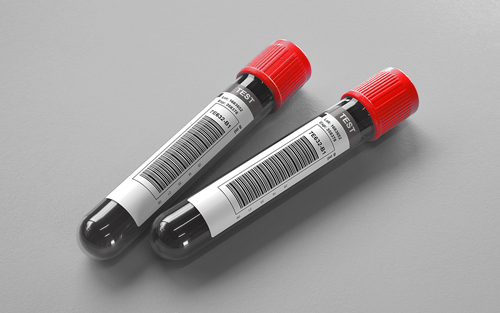Urticaria-Induced Basophil Activation
Ordering Recommendation
Determine whether CD203c is upregulated in suspected chronic urticaria if urticaria may be due to autoimmune antibodies to the basophil IgE receptor or to IgE.
New York DOH Approval Status
Specimen Required
Plain red.
Separate serum from cells ASAP or within 2 hours of collection. Transfer 1 mL serum to an ARUP Standard Transport Tube. (Min: 0.5 mL)
CRITICAL FROZEN. Separate specimens must be submitted when multiple tests are ordered.
Specimens other than serum. Contaminated, grossly hemolyzed, or lipemic specimens.
After separation from cells: Ambient: 30 minutes; Refrigerated: Unacceptable; Frozen: 1 year (avoid repeated freeze/thaw cycles)
Methodology
Semi-Quantitative Flow Cytometry
Performed
Tue
Reported
7-16 days
Reference Interval
| Test Number |
Components |
Reference Interval |
|---|---|---|
| Urticaria-Induced Basophil Activation | 27 percent or less |
Interpretive Data
A value of 39 percent or greater suggests the presence of basophil stimulating antibodies (or other serum factors).
This test was developed and its performance characteristics determined by ARUP Laboratories. It has not been cleared or approved by the US Food and Drug Administration. This test was performed in a CLIA certified laboratory and is intended for clinical purposes.
| Component |
Result |
Interpretation |
|---|---|---|
| Urticaria-Induced Basophil Activation | 27 percent or less 28-38 percent 39 percent or greater |
Negative - No basophil activation detected. Indeterminate - Borderline basophil activation detected. Positive - Basophil activation detected. |
Laboratory Developed Test (LDT)
Note
1) Chronic urticaria (CU) is a common and complex dermatological condition that is suspected when patients experience persistent hives for over 6 weeks. No published evidence of an exogenous allergen as the cause of this disorder exists. About 45 percent of cases have autoantibodies directed against either basophil or mast cell-associated IgE or the high affinity IgE-Fc receptor (Fc epsilon R1 alpha) (Clin Exp Allergy 2009; 39: 777-87).
2) The presence of histamine releasing factors (including but not limited to IgE and Fc epsilon R1 alpha-specific autoantibodies) in the patient serum can be indirectly determined by evaluating basophil/mast cell activation status using histamine release assays, autologous serum-skin test, and flow cytometric measurement of the basophil and mast-cell specific marker CD203c. Serum from CU patients can activate donor basophils, which induces histamine release and CD203c upregulation (J Allergy Clin Immunol 2006; 117: 1430-4).
Hotline History
CPT Codes
88184; 88185 x2
Components
| Component Test Code* | Component Chart Name | LOINC |
|---|---|---|
| 2005418 | Urticaria-Induced Basophil Activation | 63369-3 |
Aliases
- Anti IgE Receptor Ab
- Fc epsilon R1 alpha
- IgE-Fc receptor 1
- Basophil autoantibody test
















